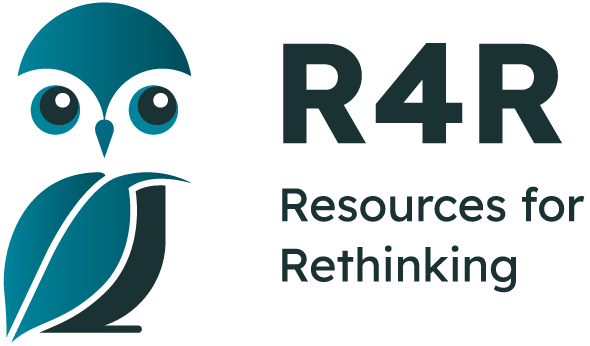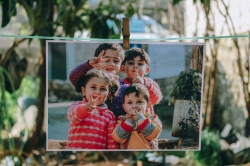Search for Resources
analyzing and synthesizing information
building consensus
effective listening
Description
This unique resource offers teachers and students a comprehensive set of tools and suggestions on how to use them to examine the war in Syria. The author provides links to powerful videos, slide presentations, news reports, journal articles and case studies for students to use to find out what is happening in Syria, why it is happening and what ‘we’ can do about it. While four and twelve-day study units are included, the reference materials provided will support independent student inquiry into the many facets of this crisis. The origins, participants, politics/religion and consequences of the civil war are among the themes and issues addressed. The devastation, brutality and complexity that continue to define this conflict are made clear and teachers should preview all of the resource materials to determine their suitability.
General Assessment
What skills does this resource explicitly teach?
Strengths
The design of the resource and the quality of tools it offers will help students form a solid understanding and strong connection to this important issue.
The resource includes all of the necessary materials to complete the lessons and offers a substantial amount of supplementary information to support student inquiry.
The resource package can be used to support different instructional approaches and different time constraints.
Recommendation of how and where to use it
This resource will help teachers address issues that they may see as difficult subject matter for the classroom. Be aware that the content of some of the supporting videos and print material is powerful and will draw emotional responses from the students. Teachers should preview all of the tools to determine their appropriateness.
Relevant Curriculum Units
The following tool will allow you to explore the relevant curriculum matches for this resource. To start, select a province listed below.
- Step 1Select a province
- Alberta
- Step 2Select a grade level
- Grade 12
- Step 3Select a subject
- Political Science
- Step 4Relevant matches
- International Politics 30
- British Columbia
- Step 2Select a grade level
- Grade 12
- Step 3Select a subject
- Social Studies
- Step 4Relevant matches
- Genocide Studies 12: Despite international commitments to prohibit genocide, violence targeted against groups of people has continued to challenge global peace and prosperity
- Genocide Studies 12: While genocides are caused by and carried out for different reasons, all genocides share similarities in progression and scope
- Social Justice: The causes of social injustice are complex and have lasting impacts on society
- Manitoba
- Step 2Select a grade level
- Grade 12
- Step 3Select a subject
- Social Studies
- Step 4Relevant matches
- Citizenship and Sustainability: Area of Inquiry: Peace and Conflict
- Citizenship and Sustainability: Area of Inquiry: Social Justice and Human Rights
- Citizenship and Sustainability:Area of Inquiry: Oppression and Genocide
- Global Issues
- Global Issues
- Global Issues
- New Brunswick
- Step 2Select a grade level
- Grade 12
- Step 3Select a subject
- Social Studies
- Step 4Relevant matches
- World Issues 120: Geopolitics
- Newfoundland & Labrador
- Nova Scotia
- Step 2Select a grade level
- Grade 12
- Step 3Select a subject
- Political Science
- Step 4Relevant matches
- Global Politics 12: Global Citizen
- Ontario
- Step 2Select a grade level
- Grade 11
- Step 3Select a subject
- History
- Step 4Relevant matches
- World History Since 1900: Global & Regional Interaction: (Open) Globalizing World Issues and Interactions since 1991
- Grade 12
- Step 3Select a subject
- Political Science
- Step 4Relevant matches
- Canadian and International Politics (Univ. Prep.) Rights and Power in the International Community
- Prince Edward Island
- Quebec
- Yukon Territory
- Step 2Select a grade level
- Grade 12
- Step 3Select a subject
- Social Studies
- Step 4Relevant matches
- Genocide Studies 12: Despite international commitments to prohibit genocide, violence targeted against groups of people has continued to challenge global peace and prosperity
- Genocide Studies 12: While genocides are caused by and carried out for different reasons, all genocides share similarities in progression and scope
- Social Justice: The causes of social injustice are complex and have lasting impacts on society
Themes Addressed
Human Rights (3)
- Refugees and Immigration
- Social Justice
- War and Peace
Sustainability Education Principles
| Principle | Rating | Explanation |
|---|---|---|
| Consideration of Alternative Perspectives | Good | The political, religious, economic and social motivations of all 'sides' involved are accurately represented. |
Consideration of Alternative Perspectives:
| ||
| Multiple Dimensions of Problems & Solutions | Good | The underlying social and economic forces at play are clearly stated. The environmental devastation is made evident in the many images and first-hand accounts. The resource promotes a systems-thinking approach in its examination of the crisis. |
| Multiple Dimensions of Problems & Solutions: Effectively addresses the environmental, economic and social dimensions of the issue(s) being explored.
| ||
| Respects Complexity | Very Good | Both the 4-day and 12-day units effectively address the complexity of the war in Syria. |
| Respects Complexity: The complexity of the problems/issues being discussed is respected. | ||
| Acting on Learning | Satisfactory | Considerable attention is paid to connecting students to the plight of Syrian refugees and those who still remain in the country. It also reveals several of the efforts being made to help. While there is no specific action activity included in the core lesson design, some ideas are offered. The awareness of and emotional attachment to the issue that the resource promotes may also lead to individual or group action. |
| Acting on Learning: Learning moves from understanding issues to working towards positive change — in personal lifestyle, in school, in the community, or for the planet
| ||
| Values Education | Very Good | Another strength of the resource, the activities require students to reflect on and articulate their responses to the powerful content they address. |
| Values Education: Students are explicitly provided with opportunities to identify, clarify and express their own beliefs/values. | ||
| Empathy & Respect for Humans | Very Good | Empathy and respect for the Syrian people and for those who risk their lives to help them are fostered in every component of the resource. |
| Empathy & Respect for Humans: Empathy and respect are fostered for diverse groups of humans (including different genders, ethnic groups, sexual preferences, etc.). | ||
| Personal Affinity with Earth | Poor/Not considered | This criteria is not relevant to the core purpose of the resource. |
| Personal Affinity with Earth: Encourages a personal affinity with -the natural world.
| ||
| Locally-Focused Learning | Good | The fact that this crisis is playing out in real time and is featured prominently in the media helps to bring a relevant and local focus to it. In addition, the resource includes simulation activities which are designed to have students experience some of what the Syrian people are going through. |
| Locally-Focused Learning: Includes learning experiences that take advantage of issues/elements within the local community.
| ||
| Past, Present & Future | Very Good | This is a strength of the 12-day design although the challenge of finding a positive way forward for Syria is reflected in the activities. |
| Past, Present & Future: Promotes an understanding of the past, a sense of the present, and a positive vision for the future. | ||
Pedagogical Approaches
| Principle | Rating | Explanation |
|---|---|---|
| Open-Ended Instruction | Very Good | Answers are definitely not provided. Students must draw their own conclusions based on the results of their inquiries. |
| Open-Ended Instruction
: Lessons are structured so that multiple/complex answers are possible; students are not steered toward one 'right' answer. | ||
| Integrated Learning | Satisfactory | The content and process of this resource address outcomes found in world history, global issues, geography and political science. |
| Integrated Learning: Learning brings together content and skills from more than one subject area
| ||
| Inquiry Learning | Good | The resource design and the tools it includes will support all points on the continuum from guided to open inquiry. |
| Inquiry Learning: Learning is directed by questions, problems, or challenges that students work to address.
| ||
| Differentiated Instruction | Satisfactory | The resource supports a number of instructional strategies and a variety of learner needs. |
| Differentiated Instruction: Activities address a range of student learning styles, abilities and readiness.
| ||
| Experiential Learning | Good | Students participate in simulation activities that help create a sense of 'being there'. The fact that this is the study of a real world issue, the effects of which are global and happening in real time, cannot be understated. |
| Experiential Learning: Authentic learning experiences are provided
| ||
| Cooperative Learning | Satisfactory | Students work individually and in groups. One of the lessons outlines and supports a 'jigsaw' approach. |
| Cooperative Learning: Group and cooperative learning strategies are a priority.
| ||
| Assessment & Evaluation | Good | Ideas for assessment are provided including a number of templates for evaluating student understanding and contribution during group discussion which is a frequently used learning activity. |
| Assessment & Evaluation: Tools are provided that help students and teachers to capture formative and summative information about students' learning and performance. These tools may include reflection questions, checklists, rubrics, etc. | ||
| Peer Teaching | Satisfactory | |
| Peer Teaching: Provides opportunities for students to actively present their knowledge and skills to peers and/or act as teachers and mentors.
| ||
| Case Studies | Good | Many of the videos provide case studies that do an excellent job informing and connecting students to different aspects of the crisis. |
| Case Studies: Relevant case studies are included. Case studies are thorough descriptions of real events from real situations that students use to explore concepts in an authentic context. | ||
| Locus of Control | Good | The tools that the resource is built on will support students pursuing their own questions. |
| Locus of Control: Meaningful opportunities are provided for students to choose elements of program content, the medium in which they wish to work, and/or to go deeper into a chosen issue. | ||

